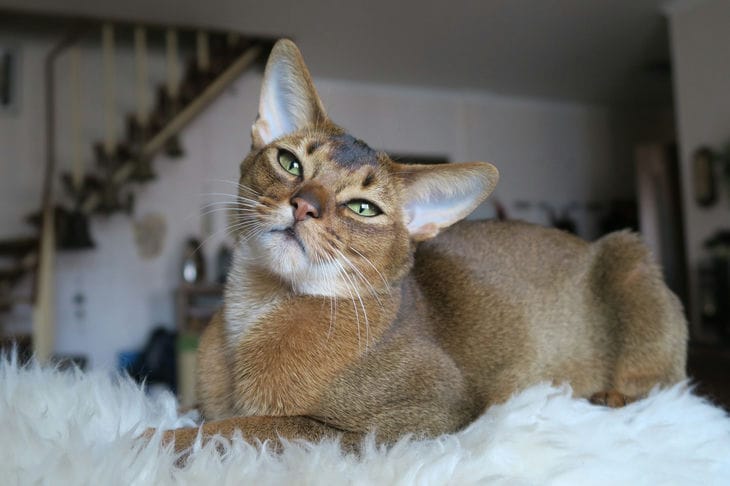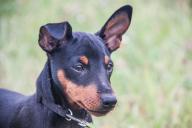Animals tend to become aggressive when they feel threatened.
As natural predators, cats attack to protect their territory or if they feel pain, but they do so under duress.
Representatives of some breeds can attack without reason and cause serious harm to a person's health.

Pallas's cat
This type of cat is distinguished by its very unusual appearance:
a thick layer of grey fur that makes the animal appear twice as thick;
short massive paws, flat muzzle and small ears;
The Pallas's cat's distinctive feature is its eyes - the pupils do not become slit-shaped when more light hits the retina, they remain round.
The Pallas's cat (another name for this breed) is a completely wild animal that cannot be tamed. Even if you take a Pallas's cat home as a kitten, it will avoid people. Accustomed to instinctively defending themselves from any intrusion into their territory, these animals will be especially aggressive in defending their sleeping place.
The Pallas's cat's claws are stronger than those of a regular domestic cat, and are also rounded at the ends, and its teeth are three times larger in size.
In nature, the Pallas's cat is characterized by a secretive lifestyle. Animals rarely contact the outside world, going out only to hunt. They are reluctant to interact with people, and even Pallas's cats raised in the zoo often show aggression towards people.
Savannah
The first representatives of this breed were obtained by crossing a common domestic cat and a serval.
The experiments were conducted with the aim of breeding a species of cats that would look like wild cats, but would be adapted to living in domestic conditions alongside humans.
Savannahs are distinguished by their spotted coat and black rings on the tail. There are also representatives with silver and chocolate colors, but less often. At the withers, cats reach 60 cm, they have long legs and neck. Their weight can reach up to 15 kg.
The danger of pets is in their wild nature. These cats need special upbringing, as predatory instincts make themselves known already at three years. Savannahs are not recommended for people who are not professionally involved in the selection of this breed, as it is very difficult to cope with the animal's temperament. It is necessary to walk the Savannah only on a leash, because in case of aggression, the cat is capable of causing serious injuries to a person.
The character of the Savannah depends largely on the generation to which it belongs:
Individuals of the 5th-7th generations, further removed from the serval, are distinguished by their curiosity and more peaceful nature.
Cats of 1-3 generations are wary of people. They are reluctant to make contact, and when they feel threatened, they hiss and can even attack.
Marsh lynx
The usual habitat of the jungle cat (another name for the breed) is hard-to-reach swampy areas. Natural caution and an inconspicuous appearance are adaptations to the conditions of the surrounding world that are necessary for survival. The tail of the swamp lynx can reach 30 cm, and the body grows up to half a meter.
Cats are generally considered to avoid water, but the jungle cat is an exception. When hunting waterfowl, the cat sneaks up on the bird and scares it into flight. It then makes a sharp leap and ends up in the water with the prey clenched between its teeth.
Attempts to domesticate the jungle cat began when the ancient Egyptians noticed this feature. They were used for hunting with great success, as the kittens easily get used to humans.
Currently, the Chausie breed is actively obtained by crossing a jungle cat with a domestic cat. They show less aggression than jungle cats and are better suited to apartment life.
Abyssinian
Only those who are ready to constantly tolerate the pet's whims should get a cat of this breed. Representatives of this type of feline constantly bite and scratch at the slightest change in mood.
They are distinguished by vindictiveness and rancor, so it is not recommended to have Abyssinians in families with small children. If they become attached to a person, then only to one. They are wary and even aggressive towards strangers.
They prefer to sleep in higher places, from where it is more convenient to observe the surrounding environment and, if necessary, attack; this feature is inherent in them by nature.
Their ancestors are African cats brought to England from Abyssinia (present-day Ethiopia) in the 19th century. The breed was officially recognized much later, before that they tried to cross Abyssinian kittens with British ones. As a result, long-haired kittens began to appear in the litter, which were identified as representatives of a separate breed.
The Abyssinian's musculature is well developed, the body does not lose its slenderness even after sterilization. The ears are twice as large as those of a normal domestic cat and are set wide apart.
Their coloring is also unusual: they are characterized by ticking. Each hair has several shades. There is no specific pattern on the fur, but it seems that it shimmers with several colors.
Mekong Bobtail
Externally, they are no different from Thai cats, except for a shortened tail consisting of bends. The muzzle and ears are just as dark, even the colors of the fur are similar. It is noteworthy that when walking, bobtails do not retract their claws into the pads of their paws, as other cats do, so their movements cannot be called silent.
Representatives of this breed have a high level of intelligence, so these cats can be trained.
Despite the fact that bobtails are more reserved in nature than Siamese cats, they can show aggression. Most often, this is due to pain or if the animal feels danger.
The Mekong Bobtail rarely uses its claws in self-defense, they mostly prefer to bite the offender. They are almost never aggressive towards children, allow themselves to be petted and react quite calmly to attempts to play.
When getting a pet, you must not forget that upbringing and living conditions have a greater influence than genetics. Each pet has a unique character, so the approach must be individual.
It was previously reported when a person should not get a cat .









